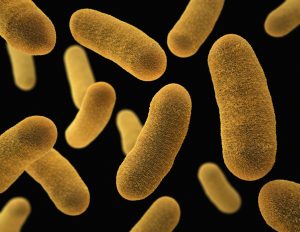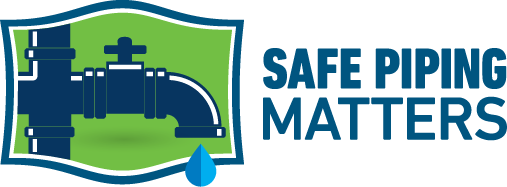Limiting Legionella in Building Water Systems
New Techniques to Gauge & Limit Risk

Cases of Legionnaires disease (a form of pneumonia) and Pontiac fever (a flu-like illness) continue to increase, according to CDC research published in March 2022. Piping systems represent a significant source of risk, as Legionella bacteria can grow in the pipes of building water systems, especially the larger, more complex ones found in commercial buildings, apartments, mixed-use, and healthcare facilities. Building features such as hot water heaters and tanks, faucets, cooling towers, shower heads, and fountains can all serve as incubators for bacterial colonization and become sources of airborne contamination, increasing occupants’ risk of falling ill.
To reduce these risks, building designers and engineers should apply insights and tools from recent research to current and future building projects. Here are some highlights:
More Efficient Water Use Can Increase Legionella Growth
Piping researchers from Michigan State, Purdue and Tulane investigated the relationship between evolving plumbing design and water quality for the EPA. Among their findings:
- Conservation measures such as low-flow fixtures help buildings consume less water, but also create better conditions for growth of Legionella and other bacteria.
- Current codes and guidelines are leading to increased incidence of Legionella. Design of plumbing systems should be studied in whole buildings – not just in labs – to identify needed updates.
- Building operations should monitor levels of oxygen, organic carbon and bacteria plate count every 2 weeks to identify when treatments may be required.
- Operations can use the time between water uses to estimate the age of water in pipes. “Older” water has increased risk of contamination.
Authors Ryan Julien, Babak Saravi, Amirpouyan Nejadhashemi, Andrew J. Whelton, Tiong Gim Aw, Jade Mitchell; published in 2022 by AWWA Water Science. (https://awwa.onlinelibrary.wiley.com/doi/epdf/10.1002/aws2.1267)
Pandemic Closures Illustrated Dramatic Legionella Growth in Water Pipes
This research “highlights the urgent need to mitigate Legionella infection risks in BWS during re-opening of buildings previously closed in response to COVID-19.” The authors studied microbial contaminants in tap water samples from building water systems, finding growth of bacterial colony forming units increased dramatically as stagnation increased:
- Fresh water had an average of 6 colony forming units per liter
- Water stagnated overnight had an average of 512 colony forming units per liter
- Water stagnated for 2 months had a staggering 260,000 colony forming units per liter
Legionella also grew more prevalent as a proportion of overall microbial contamination, rising about 5x in water stagnated overnight and over 10x in water stagnated for two months. Authors Jiayu Liang, Clifford S. Swanson, Liang Wang, Qiang He; published in 2021 by American Journal of Infection Control. (https://www.ajicjournal.org/action/showPdf?pii=S0196-6553%2821%2900595-2)
Large Buildings Should Use Site-Specific Plans to Restore Water Quality
This wide-ranging review of existing knowledge looked at how best to prepare buildings for safe re-occupancy when water quality may have been compromised. The authors emphasized the necessity for site-specific, tailored solutions, especially with higher-risk occupants and more complex plumbing systems, and highly recommended cooperation among local health authorities, building owners, and utilities. Researchers noted “evidence-based standards and guidance are lacking,” but created a useful set of issues to consider. A selected list is below, and the paper offers additional guidance.
Remediation Method | Issues |
Flushing | · Buildings contain many types of plumbing equipment that need various processes to flush contaminants · Access to plumbing plans and/or as-built construction drawings helps ensure complete system flushing · Wastewater from flushing may overwhelm onsite septic systems · Experts don’t agree on whether low or high flowrate is best. Starting low and increasing as water quality improves may be a good approach. · Hard to give a rule of thumb on how long a system will need to be flushed – some existing guidance will fail to remove “dead volume” from a system. · Testing – “including turbidity, pH, temperature, specific conductance, and disinfectant residual” – may indicate complete flushing. Disinfectant residual test strips “should be used with caution.” |
Chemical Treatments | · Compatibility problems between pipe material and disinfectants can cause leaks and damage. · Flushing of systems should precede and follow chemical disinfection. · Residual disinfectants may not achieve effective levels in situations with reduced system demand. · Chemicals used in the disinfection process may pose their own health issues to those doing the work. · Wastewater from disinfection may require treatment and should be coordinated with local authorities. |
Authors Caitlin R. Proctor, William J. Rhoads, Tim Keane, Maryam Salehi, Kerry Hamilton, Kelsey J. Pieper, David M. Cwiertny, Michele Prévost, Andrew J. Whelton; published in 2020 by AWWA Water Sci. (https://pubmed.ncbi.nlm.nih.gov/32838226/)
New Machine-Learning Research and Modeling Tools for Assessing Water Quality
Research in progress is using machine learning to try and predict how likely it is that Legionella is present in a system based on common testing for “temperature, water usage rate, pH, turbidity, disinfectant residual, water source (e.g., taps, pipes, tanks), and detected Legionella threshold cycle levels.” If fully developed, such monitoring tools would offer a faster, less costly way to identify water systems at risk of contamination versus doing laboratory testing. Authors: Brian Christopher Dye, Vicente Gomez-Alvarez, Laura Boczek; presented at American Geophysical Union, New Orleans, LA, December 13 – 17, 2021. (https://cfpub.epa.gov/si/si_public_record_Report.cfm?dirEntryId=353731&Lab=CESER)
Newly available tools from researchers at Michigan State, Purdue, and other institutions recently launched two online tools to help building owners/operators, health officials, and utilities keep building water systems free of contamination. Real-world data from the 4-year EPA National Priorities study shaped the free tools, which enable “users to evaluate how plumbing design and water use may impact chemical and microbiological water safety inside buildings.”
- The first tool models water quality in a simulated high-performance home, looking for the presence of contaminants including Legionella and other microbes, lead, iron, copper, nitrate, and trihalomethanes. The tool is available online at:
https://dsiweb.cse.msu.edu/index.php/time-series-analysis/plumbing-water-quality-tool/
The second tool focuses on microbial assessment, helping users calculate the likeliness that building occupants will face hazards from Legionella or other microbes. For example, it can look at the risk of handwashing, showers, or toilet flushes based on the level of bacteria present and the chances that a given person will fall ill (smokers and others with compromised lung function are at increased risk from Legionella). This tool is available online at:
https://dsiweb.cse.msu.edu/index.php/hypothesis-verification/4547-2/
